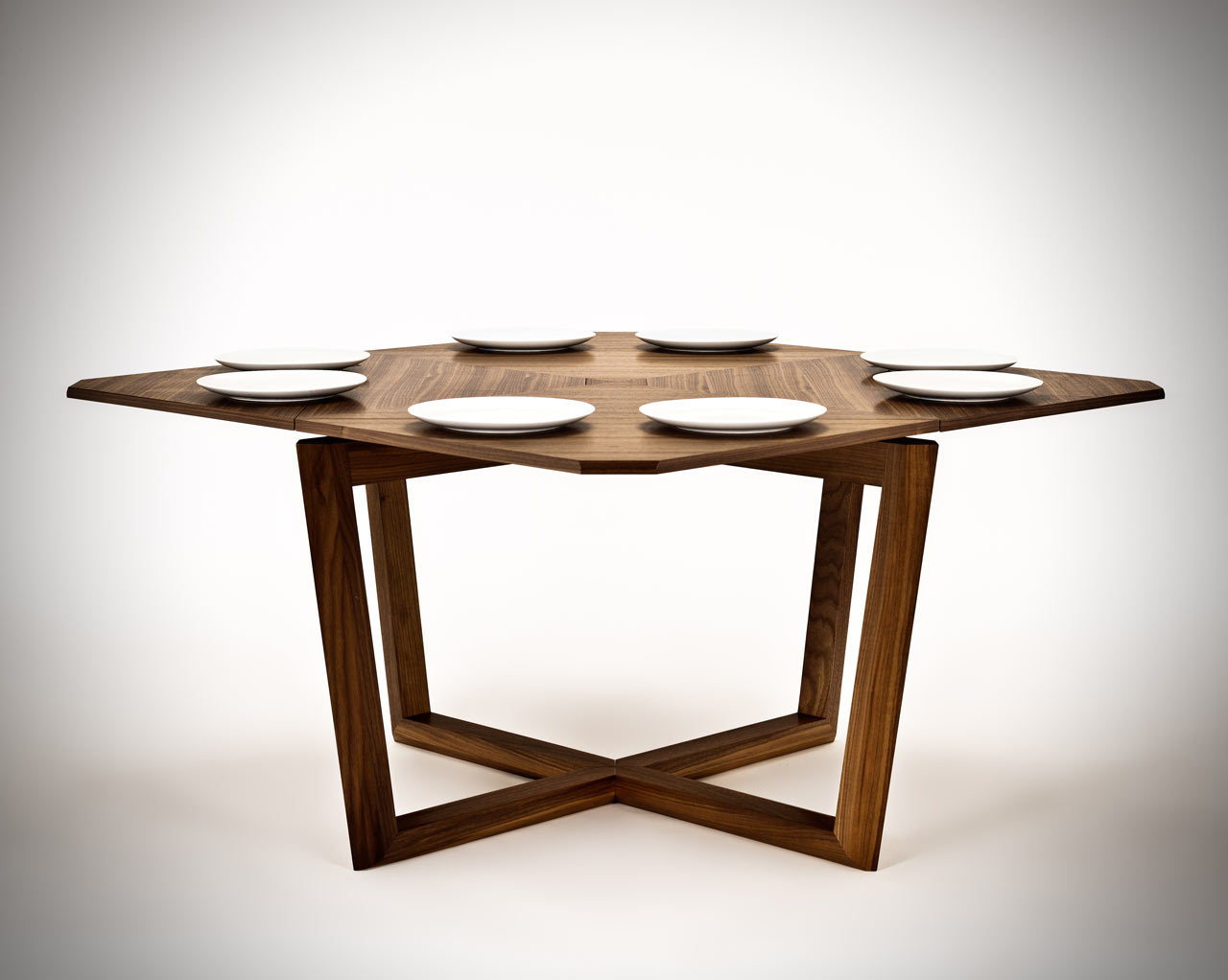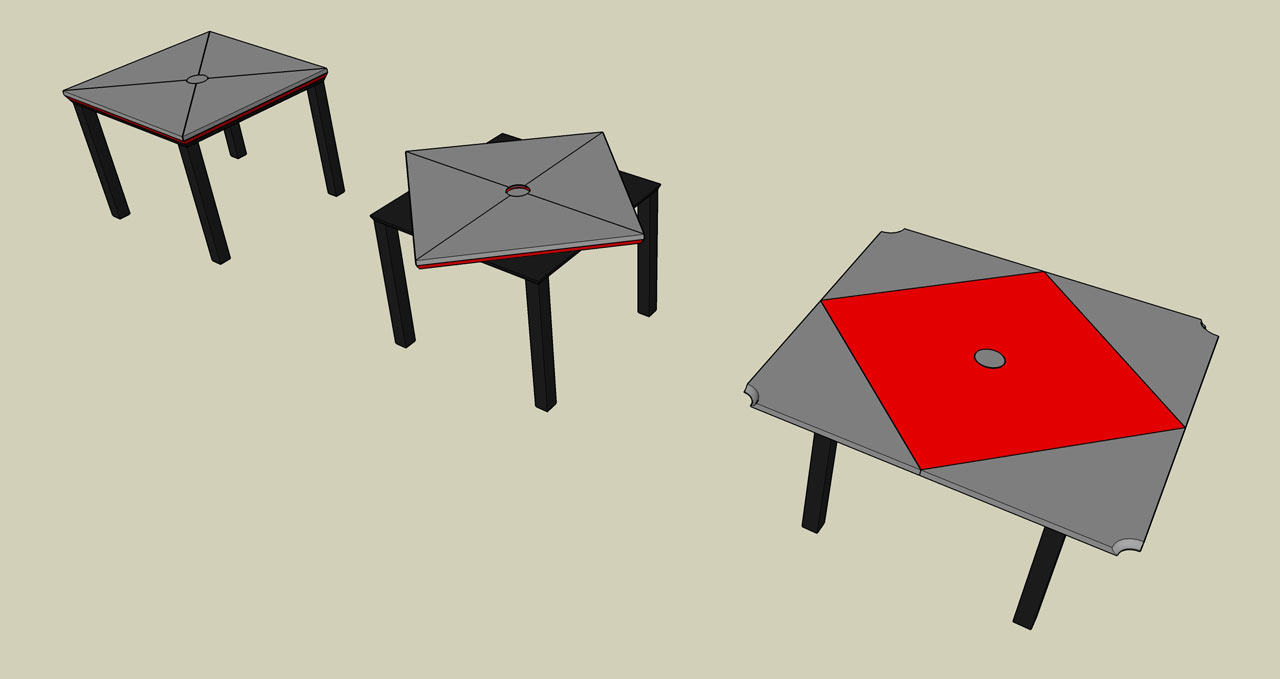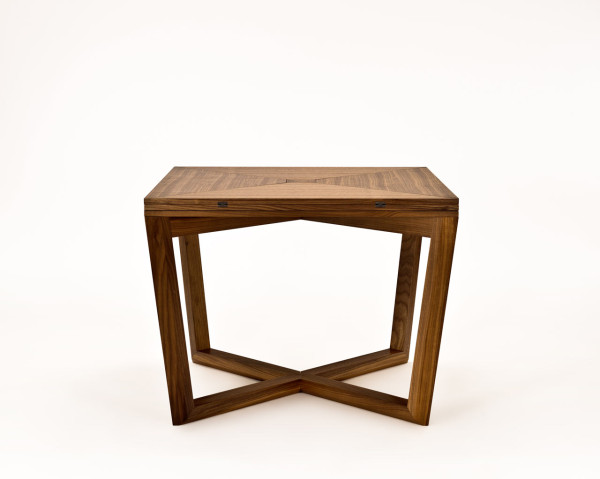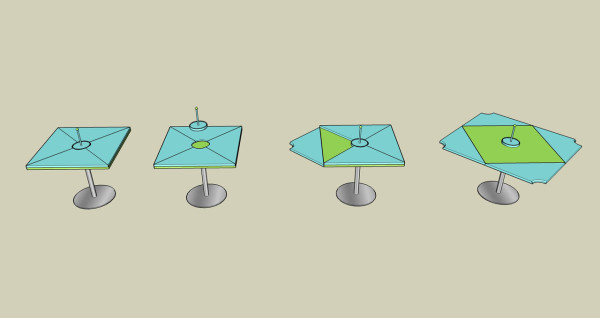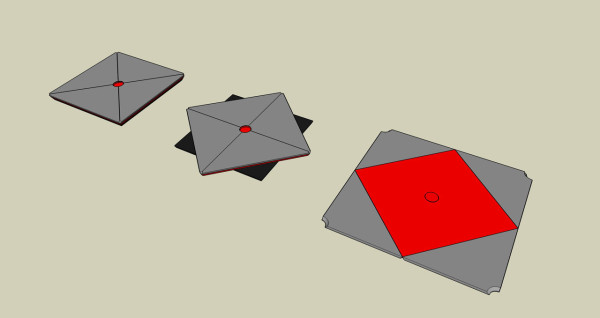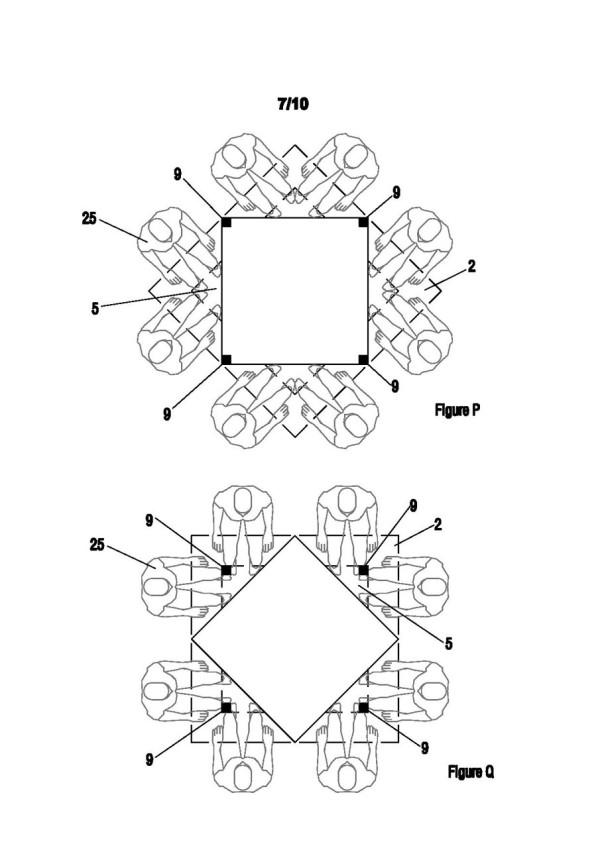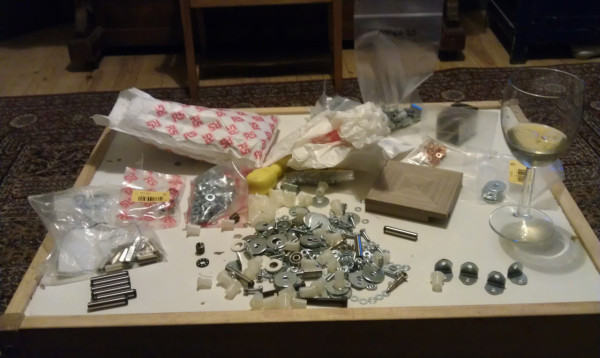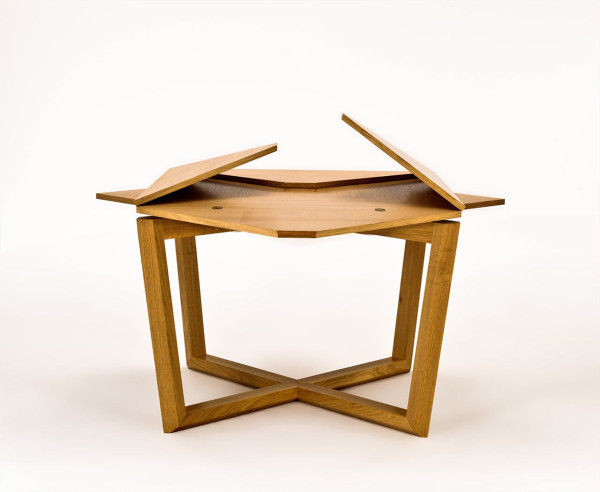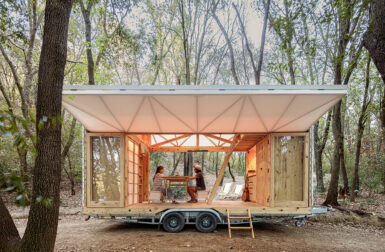The SEER Table, designed by Matthew Bridges Design, was no easy task to perfect, as the design process went through ten versions before a satisfactory table could be prototyped. Documenting the extensive journey to the finished product shows just the kind of dedication Bridges incorporates into each of his bespoke pieces. Clearly expanding on his desire for furniture to solve problems, this multipurpose table, with the help of a simple, patented mechanism, expands from a four-seat table to seat eight using only a single hand. For this month’s Deconstruction, we get a look into the extensive design process and how this table works.
A long, long time ago I came up with an idea for a new expanding table. The basic concept consisted of a square base with four triangular leaves that form a square when closed together, and then open out to form a larger square. Simple!
The birth:
At last, I get to use Pythagoras’ theorem in a real life scenario! A 1m square table will open out to be a 1.4m square table. This should be wide enough to seat 4 when closed and 8 when open.
So here’s how the Seer table has evolved:
Design no.1
The first problem was how to get your fingers in to flip out the triangular leaves. Just to get the ball rolling I came up with this rather nifty idea for a removable condiments tray – what do you mean, you haven’t got a condiments tray!?!
Design no.2
Once the leaves are flipped open, they will need to supported by something or else when someone leans their elbows on the table (bad manners, I know), the leaf could, well, break off. This could be sorted by having a sub base and then rotating the top to give a star shape which will then act as the support.
Design no.3
I wasn’t happy with having a pedestal for a base as it didn’t feel stable enough. I tried using a fixed base with a leg on each corner and rotating the top, but this led to another problem…..
If you keep the base static and rotate the top, then you end up with the legs in the way of your legs when seated (figure Q). Whereas if you can rotate a sub base independently of the legs, then the legs will end up exactly half way along the outer edges of the table when expanded, not getting in the way of anyone’s body parts (figure P).
Design no.4
I tried suspending a sub base with the corners removed, but it didn’t look very considered.
Design no.5
So, back to the pedestal for the time being. Obviously not happy with the condiment tray, I moved onto a simple push down and lock system for the centre piece – a bit like the end of a retractable biro. You turn the top, push down the middle and flip out the leaves. Now we’re getting somewhere!
Design no.6
Changed the push down centre circle to a square to echo the shape of the table, which also left nicer cut off corners when opened.
Design no.7
Eureka moment – why can’t the moving down of the centre square be controlled by the rotation of the top. Twist the top, centre piece lowers. Brilliant!!! Still persisting with the pedestal for the time being.
Design no.8
Odd veneer ideas. Finally sourced the ideal flap hinges that also provide a bit of extra support to the leaves.
Design no.9
Woohoo! After weeks of experimenting, I finally figured out a way of floating the sub base between the legs and top while still allowing it to turn and have enough strength to support the leaves when open. This part of the evolution took a lot of experimenting and frustration to get right.
Some of the bits and bobs needed to make the magic happen. Glass of wine optional.
Design no.10
Started experimenting with angled legs, and really liked tucking them underneath to meet in a four way mitre. Reminds me of a dead spider. Very happy with the shape now. Time to begin prototyping.
Watch here to see the Seer table prototype 1 in action. The mechanism works like a dream! Only fault I can find is that due to the structure of the legs, there is a bit of spring to the table – have a look at the end of the video when I close it, and you can see a slight wobble. Everyone I’ve shown thinks I’m making a mountain out of a molehill, but it will drive me nuts if it isn’t perfect. I will try increasing the thickness of the legs on my next prototype. On the whole though, I am very, very happy with it.
See the Seer table, prototype 2 in oak here. I’ve thickened the legs which has totally killed the wobble present in version 1, and I think they look better proportionally as well. Perfect!
The final product in oak, opening up.
The final product in walnut, closed.


